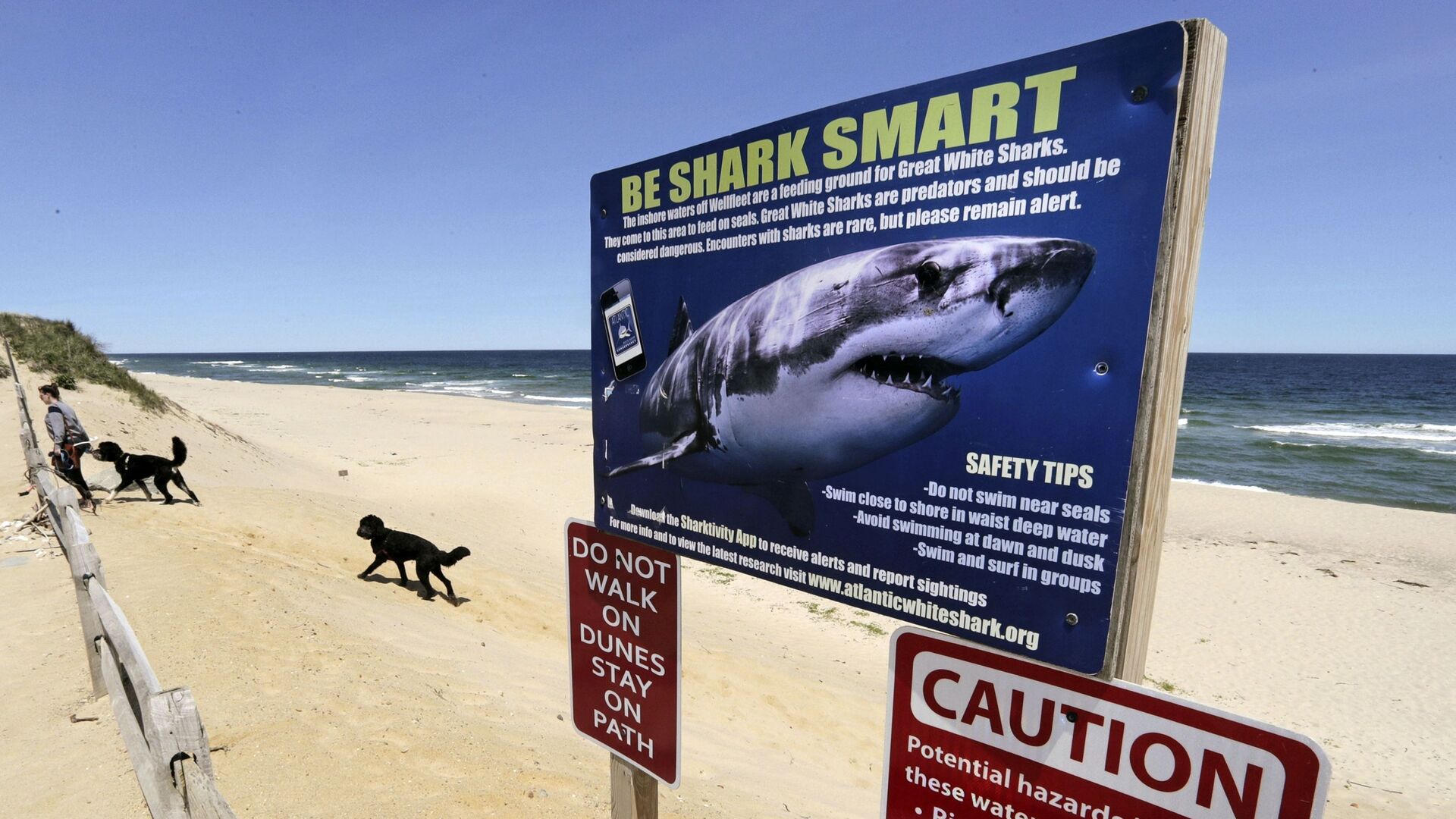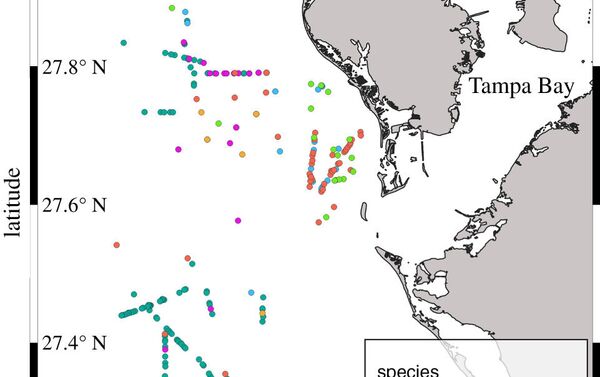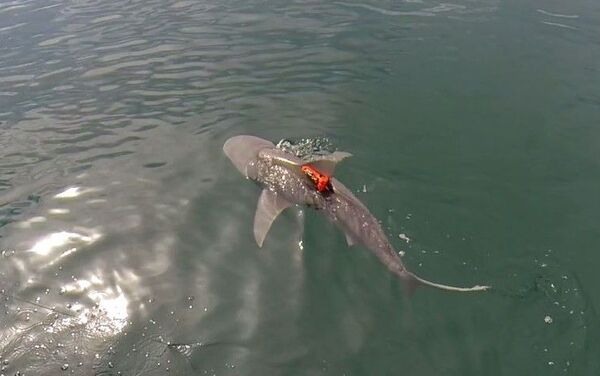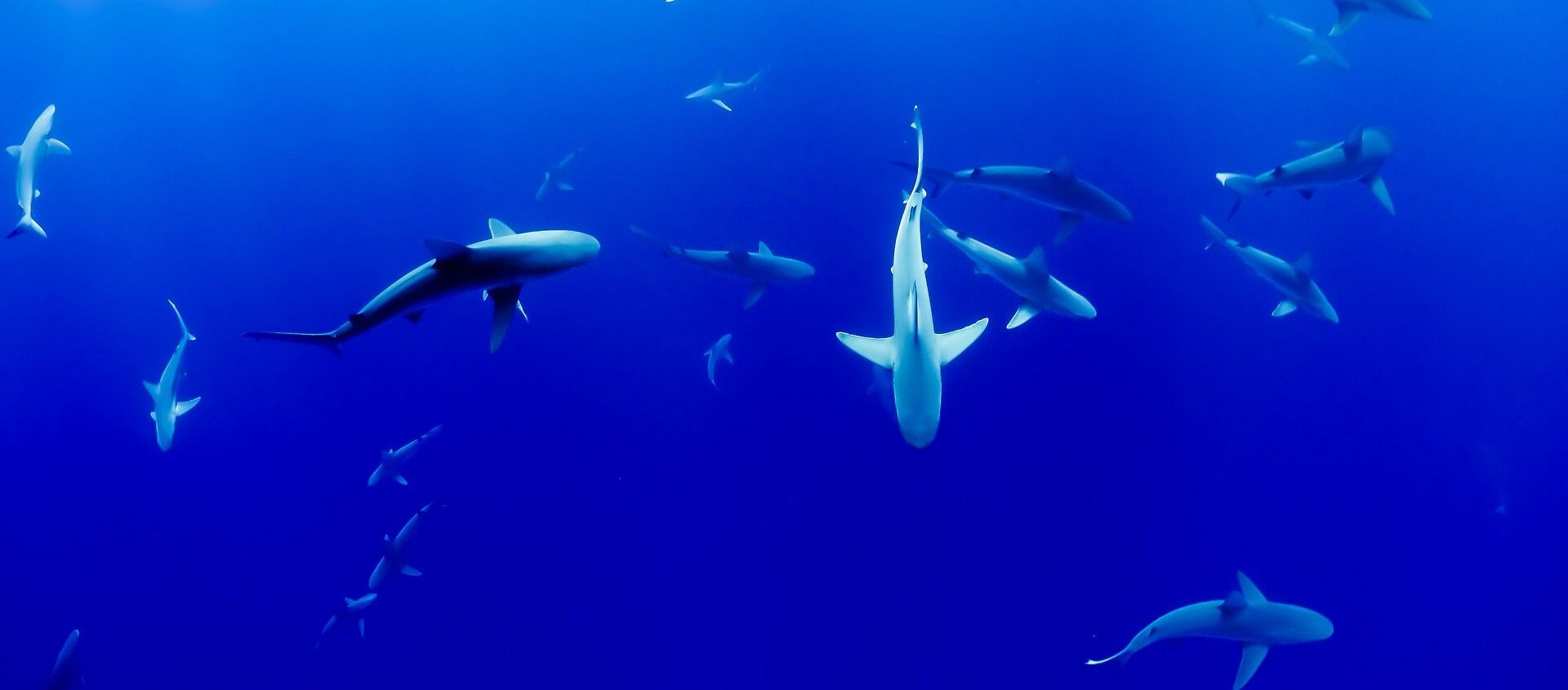Different Species of Sharks Tend to Hunt in Shifts to Avoid One Another, Research Finds
02:50 GMT 09.07.2021 (Updated: 13:32 GMT 06.08.2022)

© AP Photo / Charles Krupa
Subscribe
Previously, researchers used to think that all sharks hunted at the same time, at dusk and dawn, but it turns out that different shark species that share the same habitat have varied foraging schedules, so those who want to swim in warm waters should take into account that sharks are there 24/7.
Different sharks species in the Gulf of Mexico have a set schedule for hunting, and this could make it easier for them to share resources and avoid each other, new research by Murdoch University in Perth, Australia revealed.
Scientists studied various shark species in the Gulf of Mexico, and, according to the findings, bull sharks, commonly regarded as the world's most dangerous sharks, are most active early in the morning, whereas tiger sharks are most active around noon. Sandbar sharks are most active in the afternoon, while blacktip sharks hunt in the nighttime.
The peak activity of scalloped and great hammerhead sharks "substantially overlaps," with both species being most active at night.
"This is a relatively rare way of sharing resources in nature, but it could be more common than we think in understudied marine ecosystems," the study's lead author, Dr. Karissa Lear said in a subsequent statement. "We saw six species of large coastal sharks sharing common food resources in Florida by foraging at different times of the day."
To track the movements of the various species, the researchers fitted 172 sharks with acceleration data recorders, a similar technology that is used in many fitness-tracking smart gadgets. Thus, Lear and the other researchers were able to collect 3,766 hours of data in all.

1/4
© Photo : The Royal Society Publishing
Figure 1. Study site and capture locations. Map of capture locations of large coastal sharks caught during winter months (November–April; water temperature approx. 16–26°C) in the current study. Capture locations for all individuals caught (tagged and untagged) are shown as an indication of their spatial distribution within the study area.

2/4
© Photo : The Royal Society Publishing
Diel activity patterns of co-occurring shark species. Diel activity patterns of six species of co-occurring large coastal sharks found in the Eastern Gulf of Mexico, Florida, USA. The shaded region indicates the approximate night-time period. Because of different levels and degrees of change of overall dynamic body acceleration (ODBA) recorded for different species, activity patterns are plotted here as a percentage of the difference between the minimum (0%) and maximum (100%) ODBA level recorded for each species. The coloured bars in the outer circle show the time span of peak activity (greater than or equal to 80% of maximum activity) of each species, with this 80% threshold indicated with a dotted line on the figure. For individual species trends, error and hourly data, see electronic supplementary material, figure S1.

3/4
© Photo : Nick Whitney
A bull shark equipped with an acceleration data-logger swimming after release Image credit: Nick Whitney.

4/4
© Photo : Rob Nelson
A custom-built acceleration data-logger float package used to tag sharks in the study. Image credit: Rob Nelson.
1/4
© Photo : The Royal Society Publishing
Figure 1. Study site and capture locations. Map of capture locations of large coastal sharks caught during winter months (November–April; water temperature approx. 16–26°C) in the current study. Capture locations for all individuals caught (tagged and untagged) are shown as an indication of their spatial distribution within the study area.
2/4
© Photo : The Royal Society Publishing
Diel activity patterns of co-occurring shark species. Diel activity patterns of six species of co-occurring large coastal sharks found in the Eastern Gulf of Mexico, Florida, USA. The shaded region indicates the approximate night-time period. Because of different levels and degrees of change of overall dynamic body acceleration (ODBA) recorded for different species, activity patterns are plotted here as a percentage of the difference between the minimum (0%) and maximum (100%) ODBA level recorded for each species. The coloured bars in the outer circle show the time span of peak activity (greater than or equal to 80% of maximum activity) of each species, with this 80% threshold indicated with a dotted line on the figure. For individual species trends, error and hourly data, see electronic supplementary material, figure S1.
3/4
© Photo : Nick Whitney
A bull shark equipped with an acceleration data-logger swimming after release Image credit: Nick Whitney.
4/4
© Photo : Rob Nelson
A custom-built acceleration data-logger float package used to tag sharks in the study. Image credit: Rob Nelson.
Although it is unclear to the researchers why various shark species hunt at different times, they believe it allows them to coexist peacefully, share resources, and avoid colliding.
"This both reduced the competition for food and, for some species, reduces the chances of being preyed upon by larger species," one of the study's authors, Dr. Adrian Gleiss said. "Indeed, the timing is likely to be at least partially driven by hierarchy - forcing less dominant predators to forage in less optimal periods to avoid those larger sharks."
In an interview with New Scientist, UK Bournemouth University's Georgia Jones suggested that such a time diversification could take place because "the bigger species – the tiger sharks – have their time and no one interferes with it, so they hunt whenever is best for them."
"Then smaller species like the blacktips will work around the times so that they’re not co-occurring with the tiger sharks, because tiger sharks will predate them," she added.
Sharks, as predators, play an important role in maintaining healthy ecosystems by exerting top-down control and altering the behavior of other species. This necessitates an understanding of their behavior and resource partitioning.
"To our knowledge, these results are the first example of diel temporal partitioning in a marine predator guild," Lear concluded. "Understanding the mechanisms that allow marine predators to coexist will help us to preserve and restore healthy, predator-rich marine systems."

